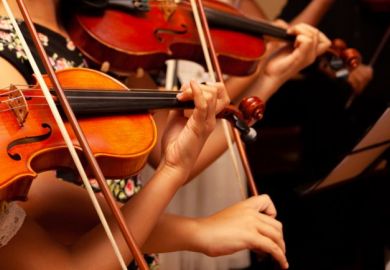As Britain turns its public face away from opera, opera publications abound. As government, parliament and press let Covent Garden cancel its season and cut back its essential labour force on the way to a likely diminuendo millennium-wards, publishers feed the Christmas market with yet more reference works and lavishly illustrated potted histories. Nor is the audience these books go for a mere Three Tenors fan club. The two examples under review assume a readership interested in the detail of a wide repertoire.
What is going on? Acquaintance with British opera houses suggests that in Britain an eager, all-age minority audience wants opera as it no longer does in the original homeland of the genre, Italy. Yet there seems little doubt that Britain as represented by the great and the good has lost the will to support an opera house of international standard. The central truth about such a house on this side of the Atlantic - you are not obliged to have one, but if you do you must be prepared to pay through adequate subsidy - is dodged, as is the alternative of making a clean cut; the likely outcome is muddling through to a second-rate future.
My own hunch is that the vital impulse towards the revival of opera from 1945 came from the mainly Jewish refugee population, who joined the extant followers of Thomas Beecham and Lilian Baylis to make up an influential bloc. Their grandchildren are now assimilated; opera no longer has a powerful lobby behind it, while the people at large have no tradition of regarding opera, Vienna or Milan fashion, as a feather in the nation's cap - rather the reverse.
A more scientific inquiry into the question might make an interesting book - rather more to the point than these two. Who's Who in Opera is a puzzle: a careful, highly informed carrying out of a task one might think was no longer needed. As the subtitle suggests, it gives descriptions of characters in opera, together with some account of their share in the plot and the name of the singer who created the part; for leading parts, we hear about well-known later interpreters. There are also summaries of opera plots and essays on individual characters, mainly by singers who have performed them.
It is all done with high precision. Yet surtitles now rule all international opera houses except La Scala; as Richard Somerset-Ward points out in The Story of Opera , they let the audience identify the characters and follow not just the plot but the dialogue as no one had been able to do since auditoriums were darkened in the late 19th century - or indeed since instrumentation thickened in the late 17th. Why then do we need plot summaries, any more than we need them for an evening at the National Theatre? News such as that Mlle Molé-Truffier created the part of Poussette - one of the three whores who have episodic roles in Manon (1884) - speaks for the author's extraordinary industry but hardly seems urgent.
Some of the essays run to anecdote and "my great success"; the best, as one might expect, are by singers who have shown uncommon intelligence and sensitivity on stage - Sena Jurinac on the interpretative and technical questions thrown up by the part of the Composer in Ariadne auf Naxos , Thomas Allen on the need for the singer of Don Alfonso in Cos fan tutte to be experienced because the character has to do so much listening.
The Story of Opera is in the first place an American piece of book production - large format, big pictures, intelligently chosen and well laid out, with plentiful use of white space; the result looks festive. The author of the text, Richard Somerset-Ward, is British - a former head of music and arts programming for BBC TV, now living in New York. This ensures that it reads smoothly for a British audience; but, though fluent, it remains deeply old-fashioned.
The text treats opera as a series of national schools, made up of groups of composers to be dealt with one by one, with much biographical information; for each school a further section deals with the singers who became prominent at the time. In this it is like many earlier books, and scarcely adds much to them, but for its willingness to take in operetta, zarzuela , and West Side Story as well as the usual opera-house repertoire. Indeed it necessarily depends on those earlier books, from which it recycles many hoary anecdotes. It has a thesis - that what matters in opera is "drama in music", and that the coming of the dominant producer has brought the "first great age" of the art - but does not develop it: "radical reinterpretations" by producers have led to "arguments"; that is all.
Alternative readings are not considered - such as that opera was for much of its history an art driven by performance, with singers and scene designers at least as central as composers; indeed Somerset-Ward dismisses 18th-century singers' habits of improvising ornamentation as "undisciplined behaviour" put an end to by Gluck, a traditional view which musicologists have long since exploded. Internal evidence suggests that he is most taken with Monteverdi, Wagner, and certain 20th-century operas, and least with the 18th century (Mozart excepted) and the early 19th. Inaccuracies here and there reach a climax with Bellini, of whom it is said that he became "near mad", that "no one knows what he died of", and that Berlioz "held (him) in veneration" - all untrue. For the rest, the book is comprehensively bland.
John Rosselli is an opera critic and emeritus reader in history, University of Sussex.
Who's Who in Opera: A Guide to Opera Characters
Author - Joyce Bourne
ISBN - 0 19 210023 8
Publisher - Oxford University Press
Price - £20.00
Pages - 457
Register to continue
Why register?
- Registration is free and only takes a moment
- Once registered, you can read 3 articles a month
- Sign up for our newsletter
Subscribe
Or subscribe for unlimited access to:
- Unlimited access to news, views, insights & reviews
- Digital editions
- Digital access to THE’s university and college rankings analysis
Already registered or a current subscriber?



